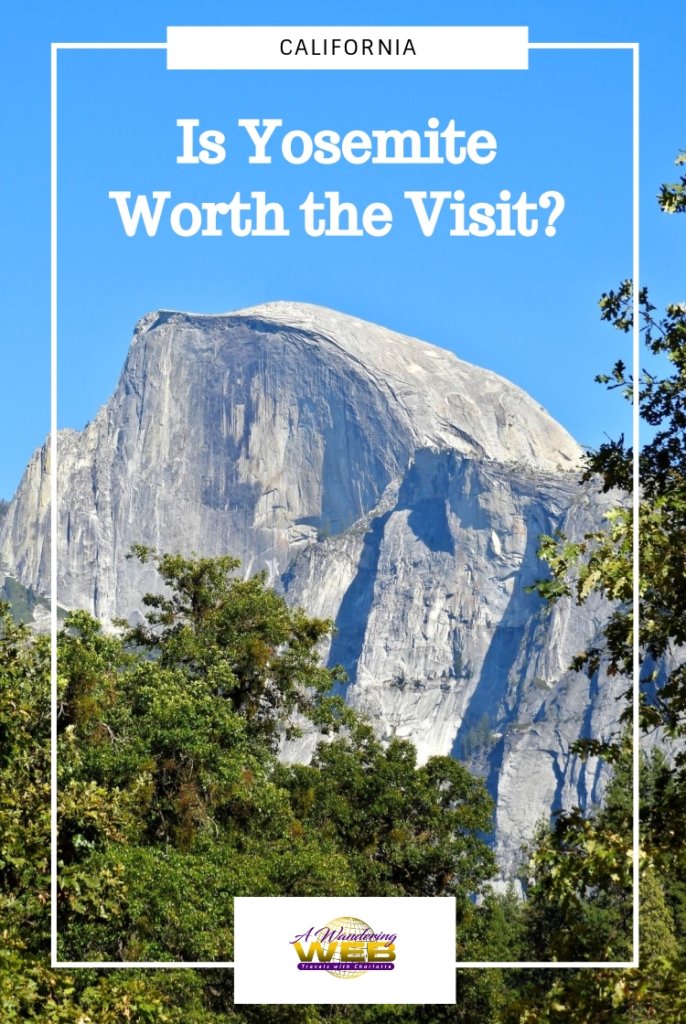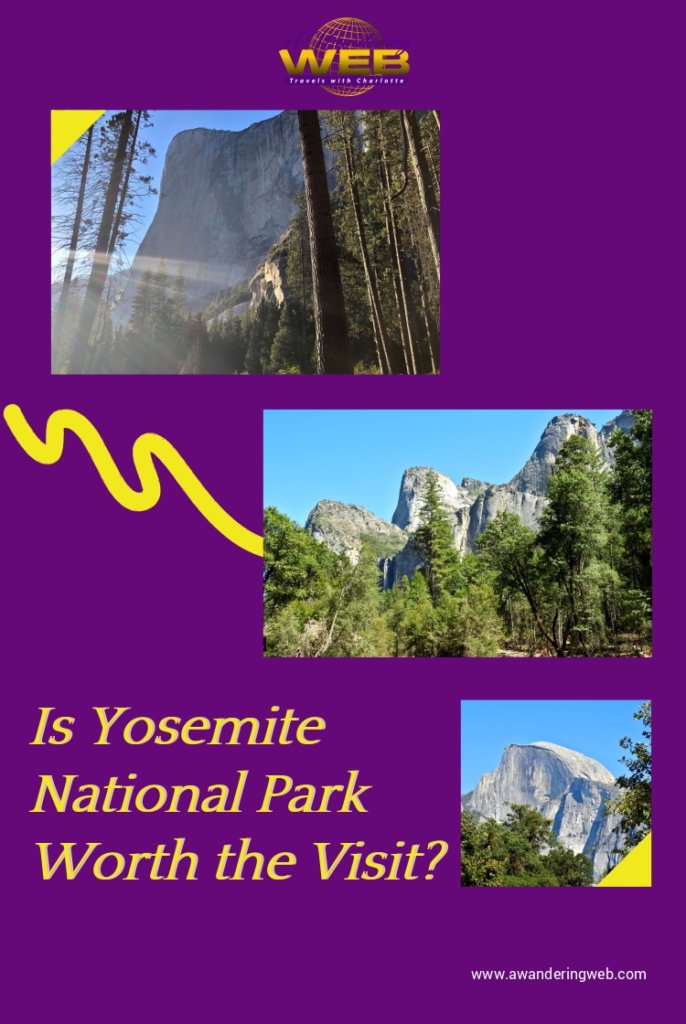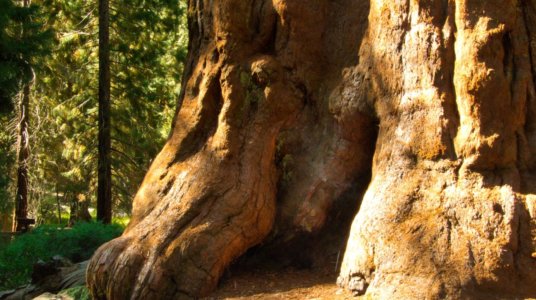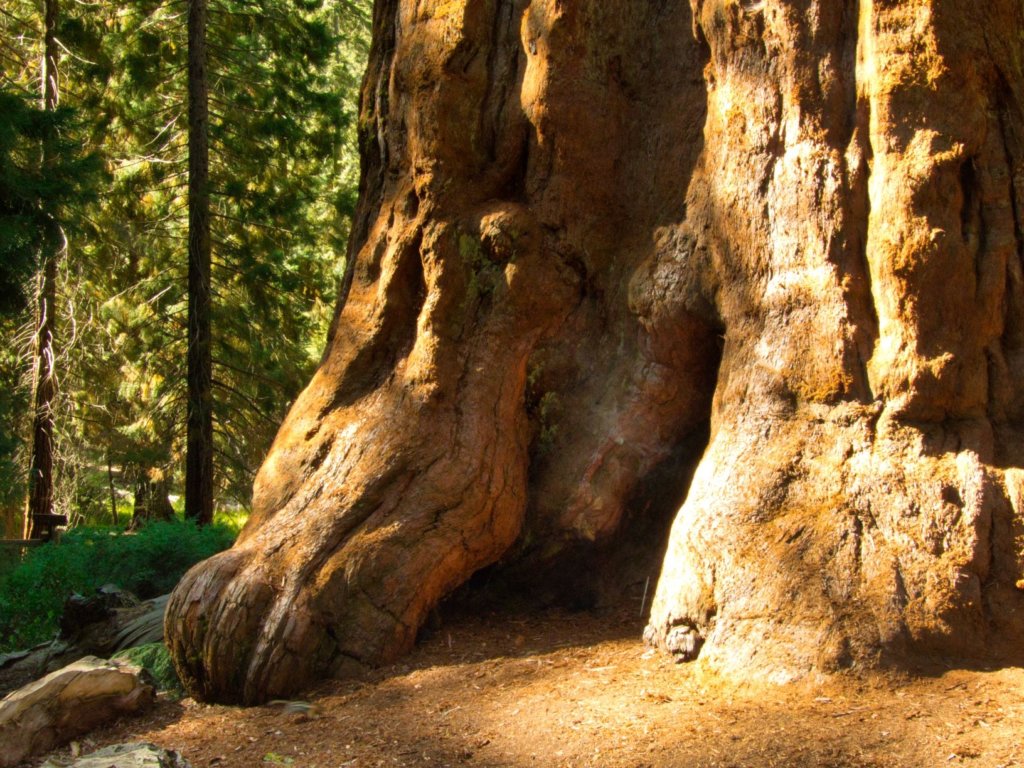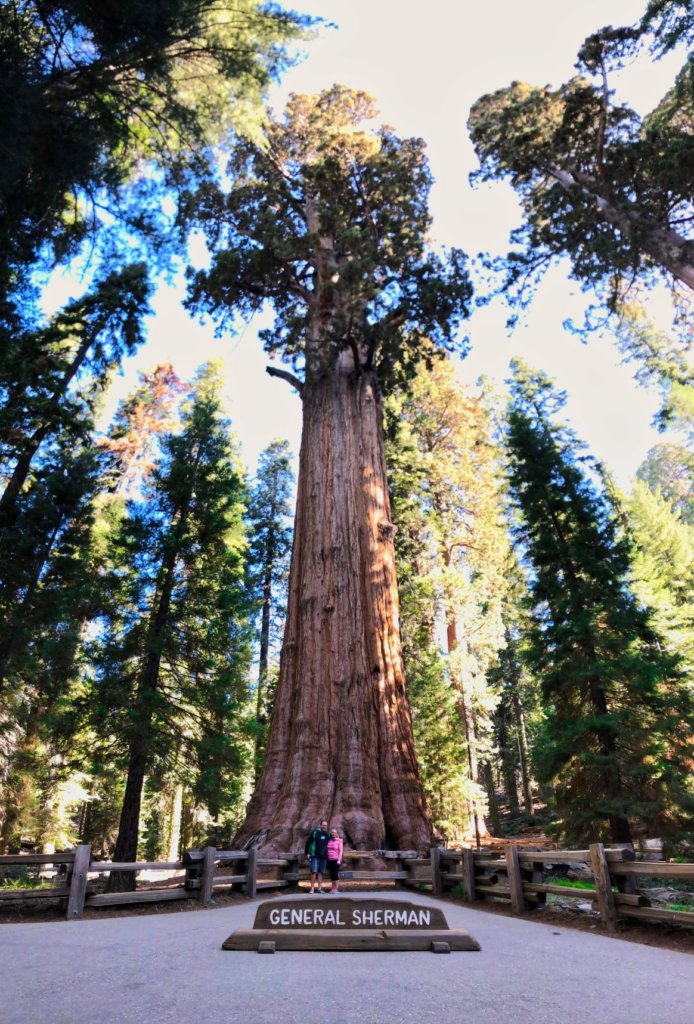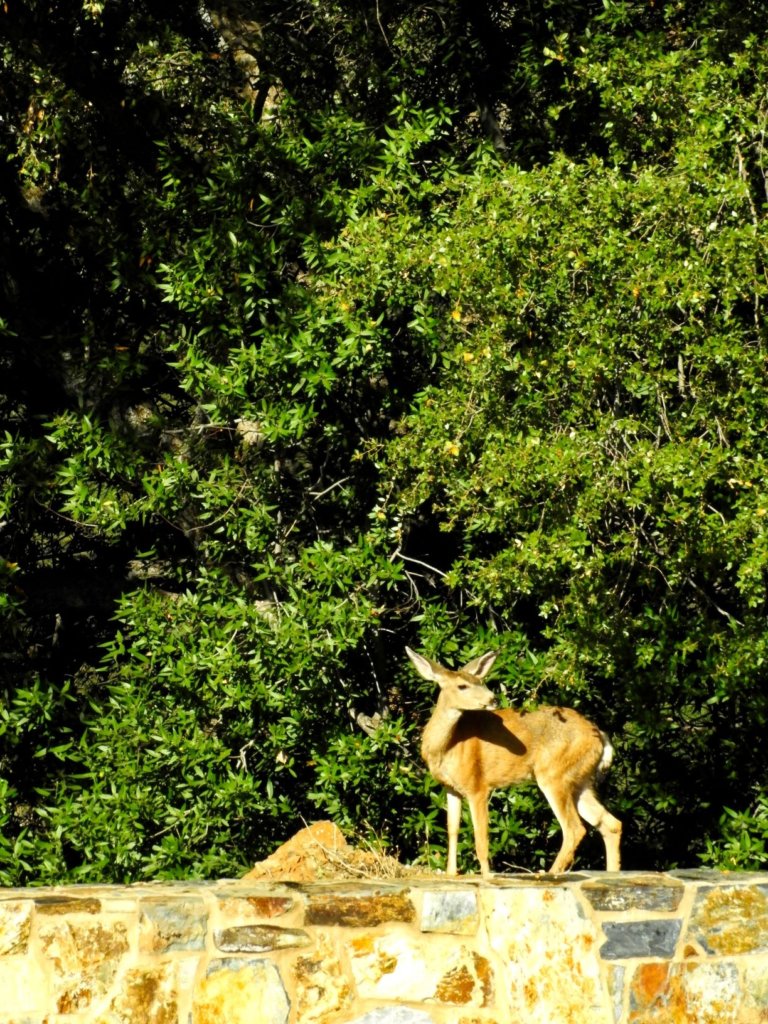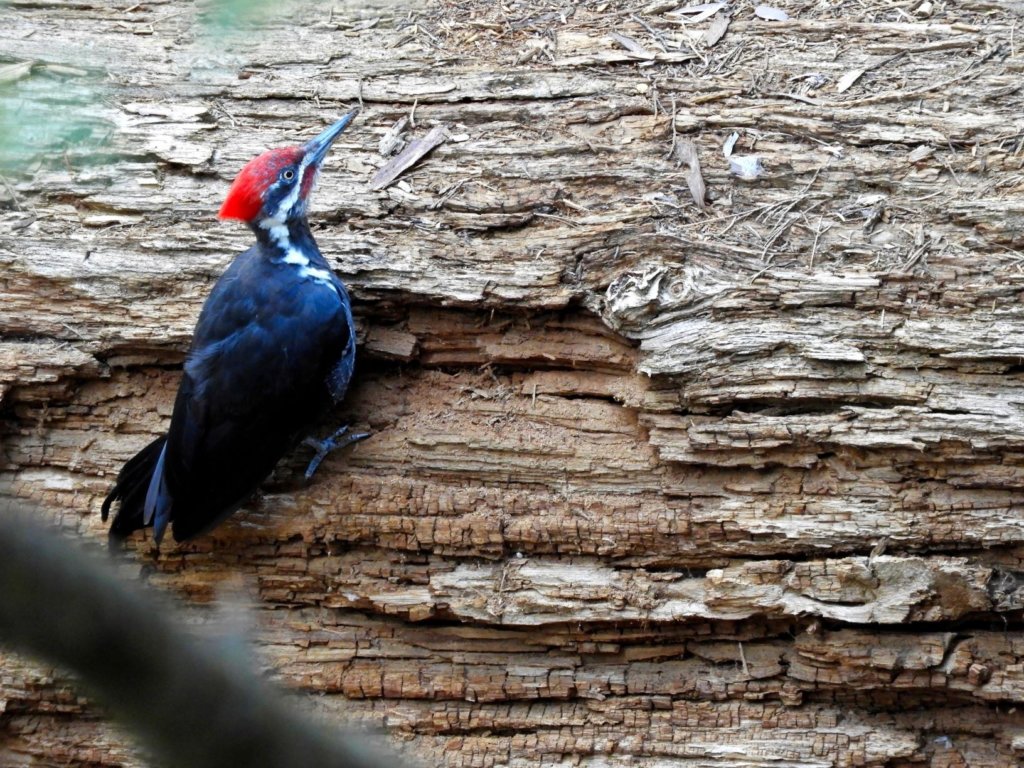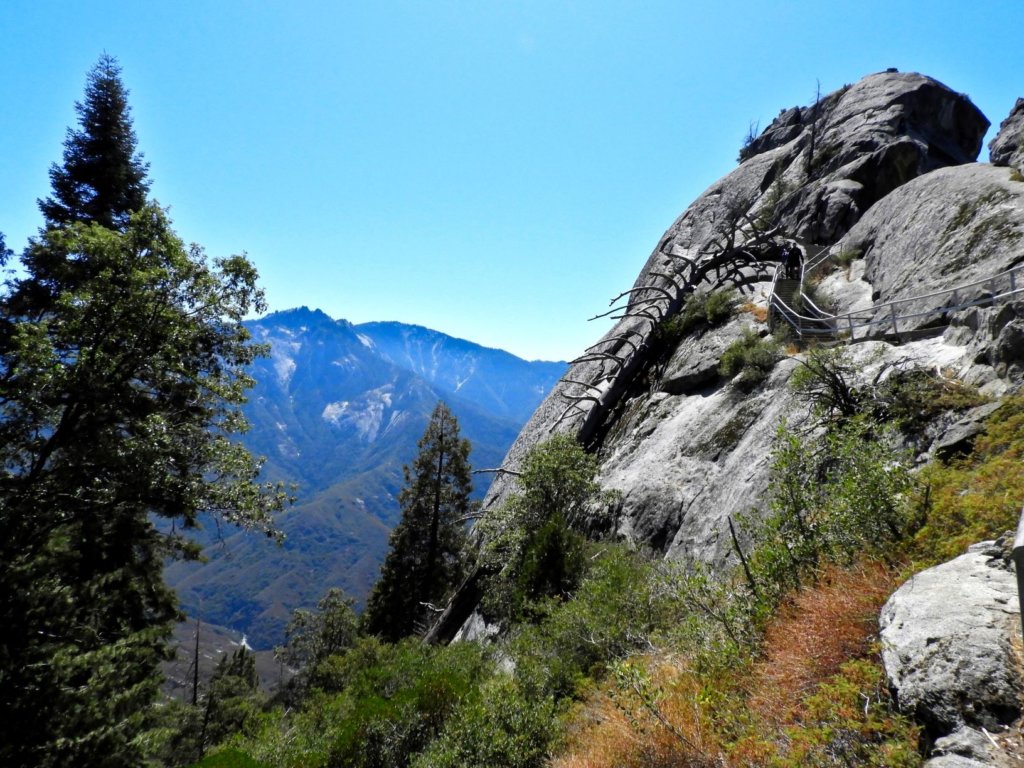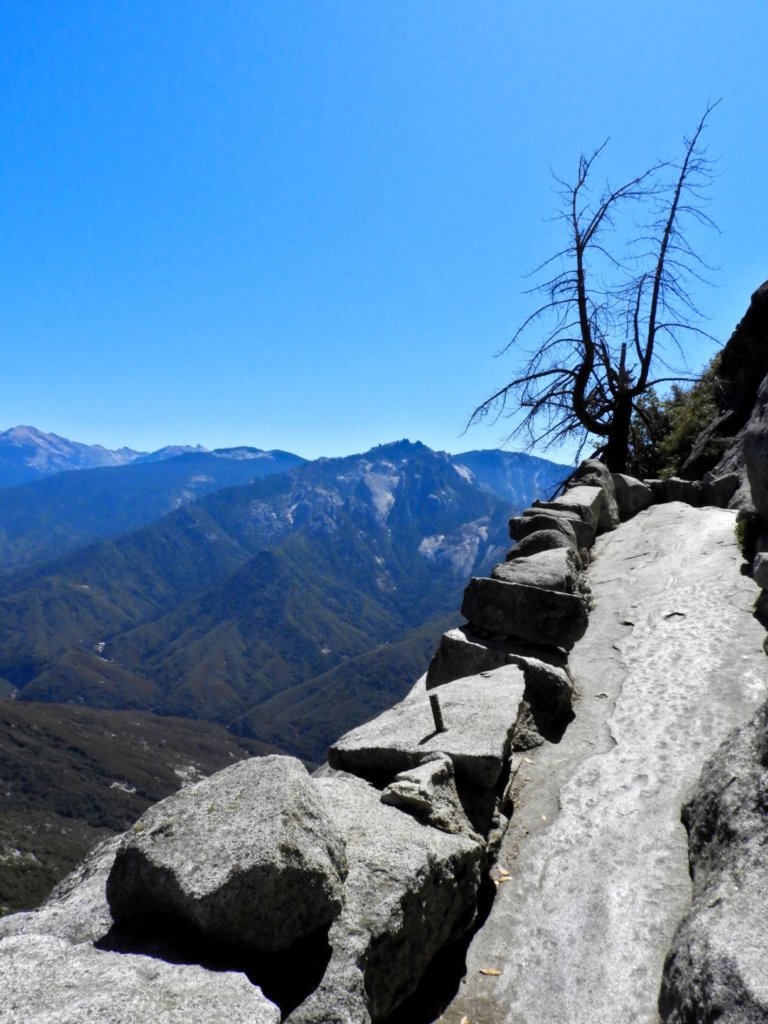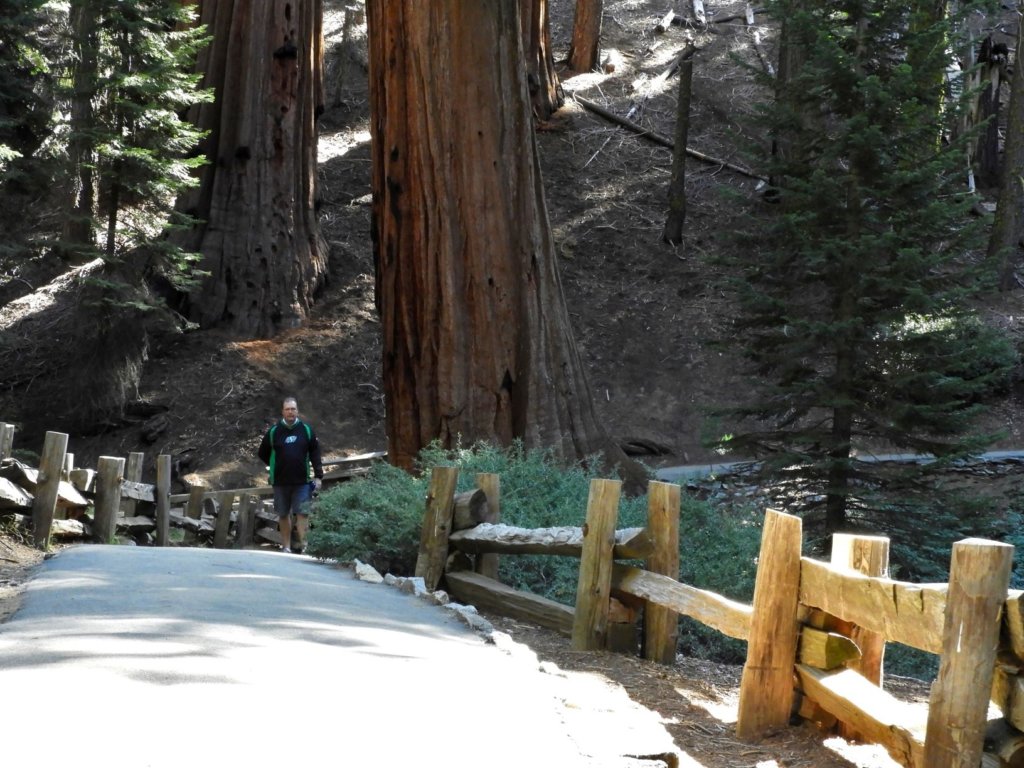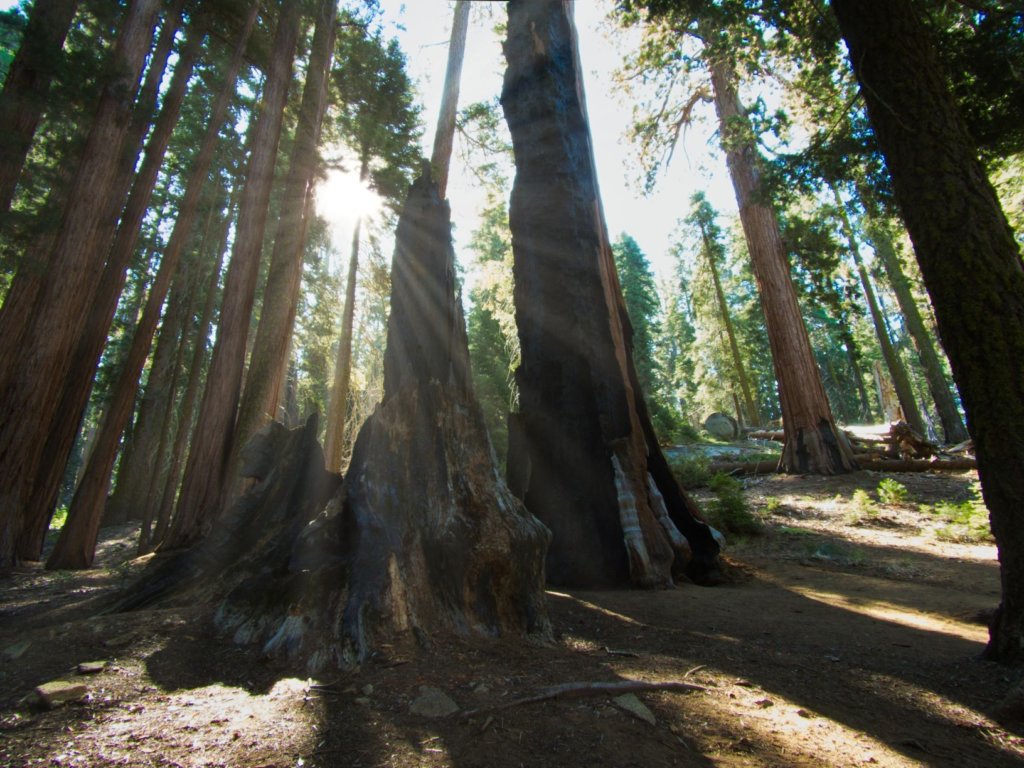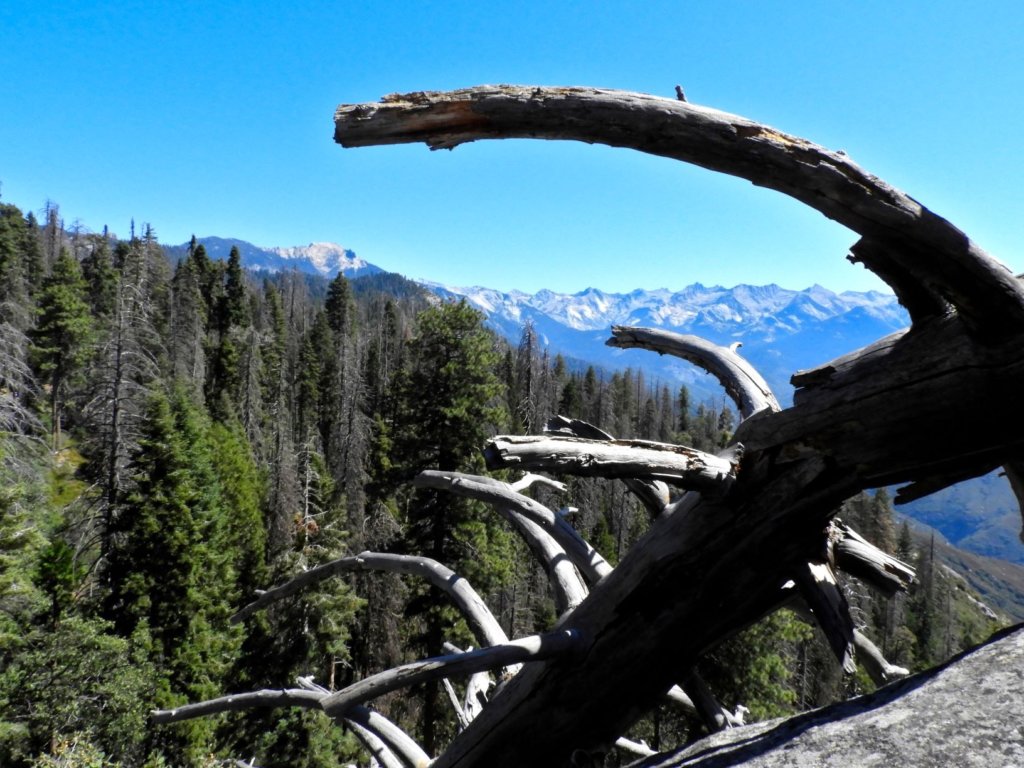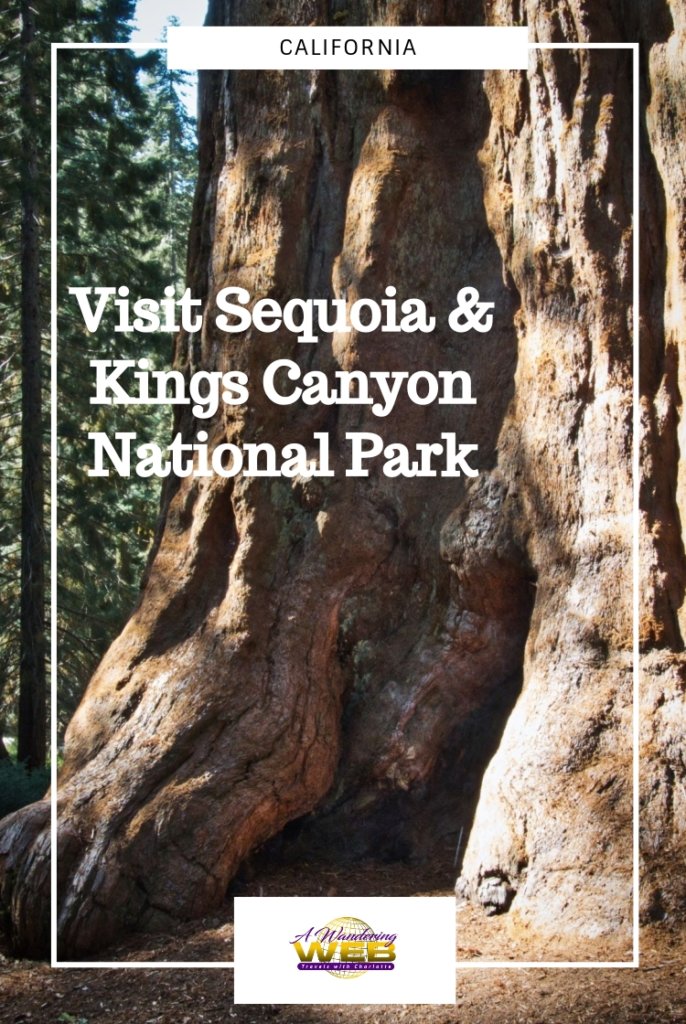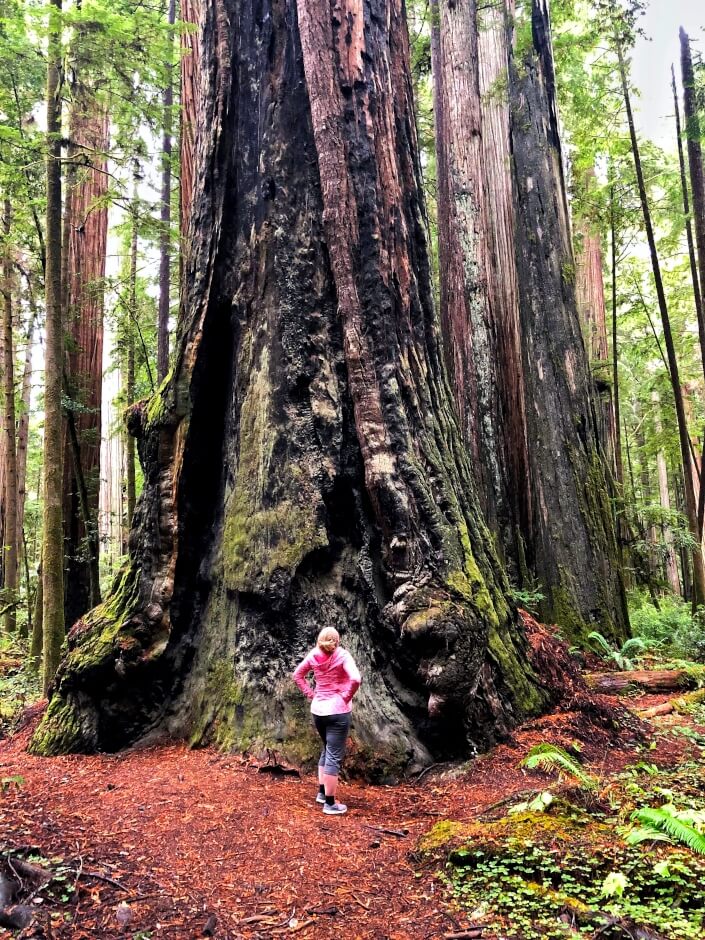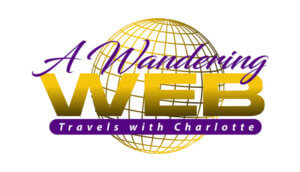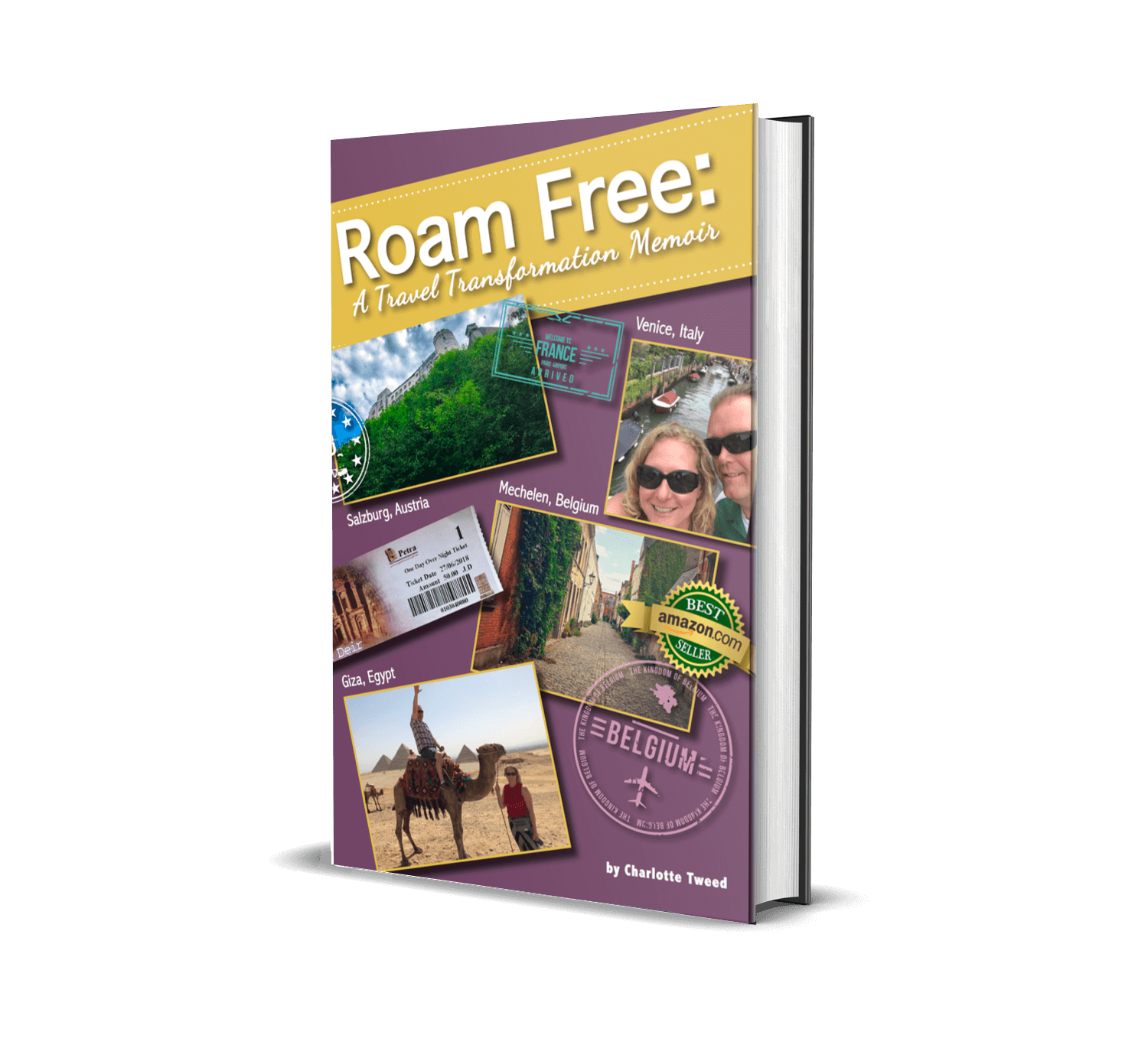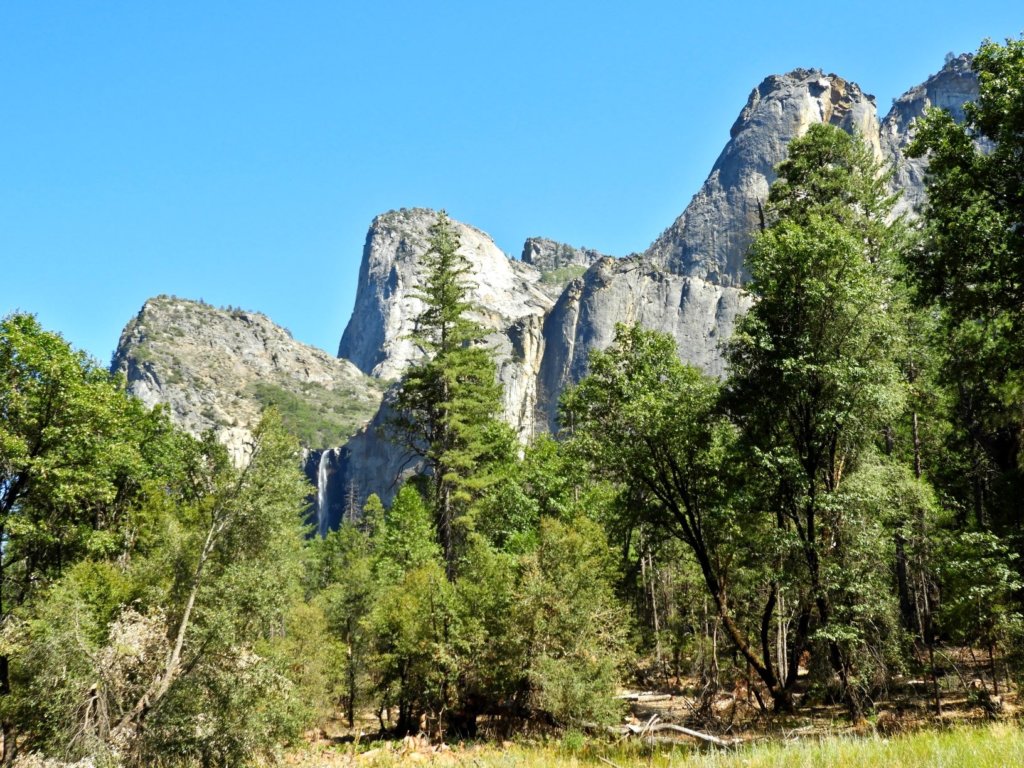
Yodel-Ay-Hee-Hoo! You have finally made it to Yosemite National Park in California. But is Yosemite National Park worth the visit? Parking woes. Confusing signage. Tons of people. It’s like when you hear hype about a movie and become so excited to see it you can hardly wait. Then, the day arrives when you finally get to watch it only to go, “meh.”
Granted, the above sentiment has to do with our mindset and the experiences we had (or did not have) in Yosemite and the surrounding area. But I’ll get to that part of the story shortly.
We recommend staying as close to Yosemite as possible, yes, the closer you are, the more expensive the accommodations. However, the money you spend will be worth it for the amount of time it will take you to drive to Yosemite Valley. We stayed in Merced and would not do so again. It took over two hours to arrive at Yosemite Valley from Merced.
*Note: Some of these links are affiliate links, meaning that if you book through my link, I will make a small commission (at no extra cost to you).
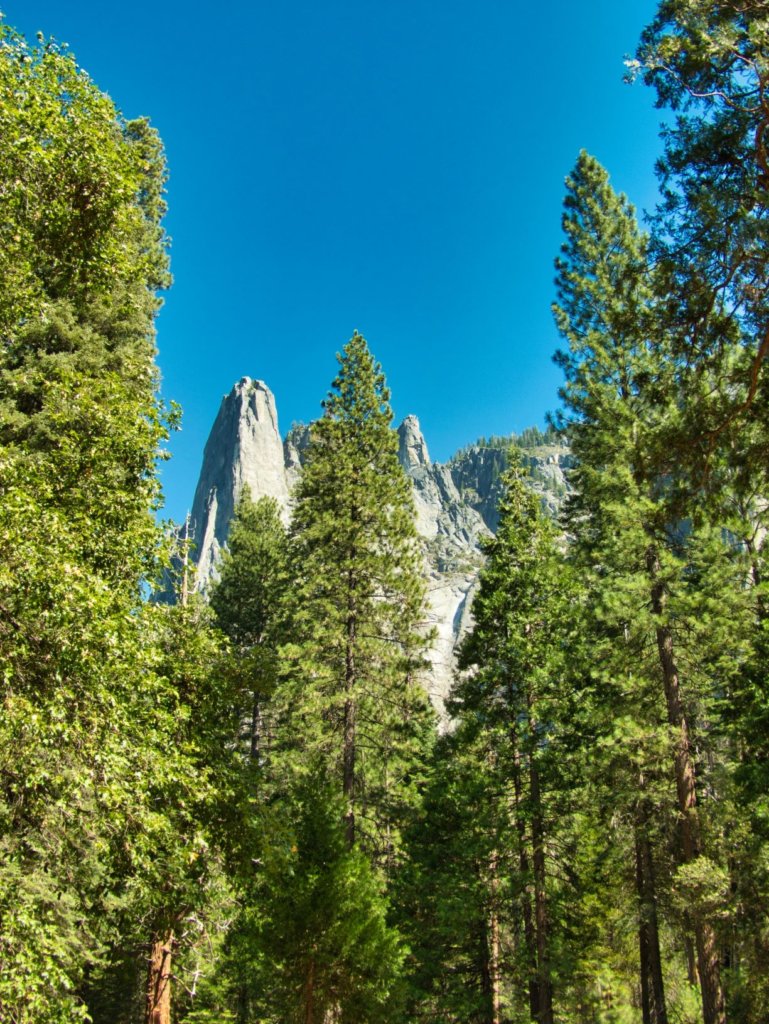
Where Not to Stay
Repeat. Merced.
Let’s just say our prayers were answered that we still had a car in the morning with four wheels still attached. The Gateway to Yosemite? Debatable. This town is way too far out to spend the night and then visit the park, unless you get up before the world awakes.
Where to Stay
Mariposa on Highway 140 looks like a nice, typical mountain town and it is where we would stay if we were to visit Yosemite again. The historic downtown has a feeling of the Old West and California Gold Rush days. There are no strip malls, chain stores, or traffic lights.
Originally, we were going to stay in Mariposa but opted for Merced due to hotel prices. Don’t make the same mistake we did.
rel=”nofollow” Booking.comTwo other places on El Portal Road that looked good to stay at were Yosemite View Lodge, right outside the park gates and Cedar Lodge.
Traffic Woes
Our visit to Yosemite was on a Saturday in September. Traffic was bumper-to-bumper entering the park. Go to the park as soon as the gates open. Another big mistake—we did not arrive in the park until early afternoon. We spent an hour driving around in circles like a giant caterpillar of automobiles trying to find a place to park.
Traffic is only one way in Yosemite Valley so if you miss a turn, be prepared to go the full circle all over again. Literally, all the parking lots were blocked off. Finally, we just parked in the lot of Yosemite Valley Lodge where we found a space. The concern of a parking ticket didn’t even phase us at this point.
The excessive time driving around in circles caused our visit to Yosemite to be disappointing as much time was wasted inside the car. The visitor center is not at the entrance of the park—as with many other parks we visited—and it is not accessible by car. The park trails are poorly signed and laid out.
If you stay in the park, there are free shuttles so you will not have to fight the traffic.
Yes, the views of the towering granite cliffs are a rock-climbers dream with their 90-degree gripping angles. Admittedly, our less than life-changing experience would be due to poor research on our part. Nothing I read about the park provided any information on the difficulties of parking or how long the drive into the park took or the horrors of parking.
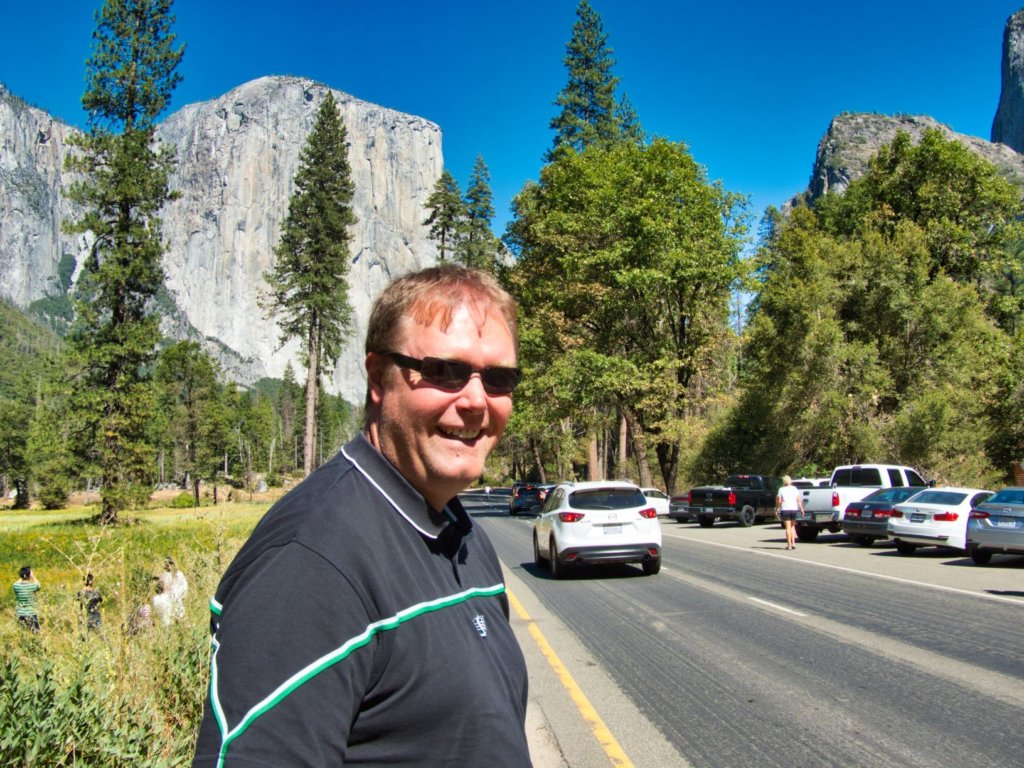
Where to Park
Maybe I am not the best person to answer this question, but here goes…
There are three major parking lots in Yosemite (of which there was no availability on our visit):
- Yosemite Falls Parking Lot,
- Yosemite Village Parking Lot
- Curry Village Parking.
Free shuttle service to destinations throughout Yosemite Valley is available at each of the above parking lots. If you have a lodging or campground reservation, park at your lodge or campsite. Once you find a place to park, do not move your car. Stay there and take the shuttles.
The Most Distinctive Monuments in Yosemite National Park
Half Dome is Yosemite’s most distinctive monument. Cook’s Meadow, Sentinel Bridge, Tunnel View, and Glacier Point are a few of the best places for a view of Half Dome.
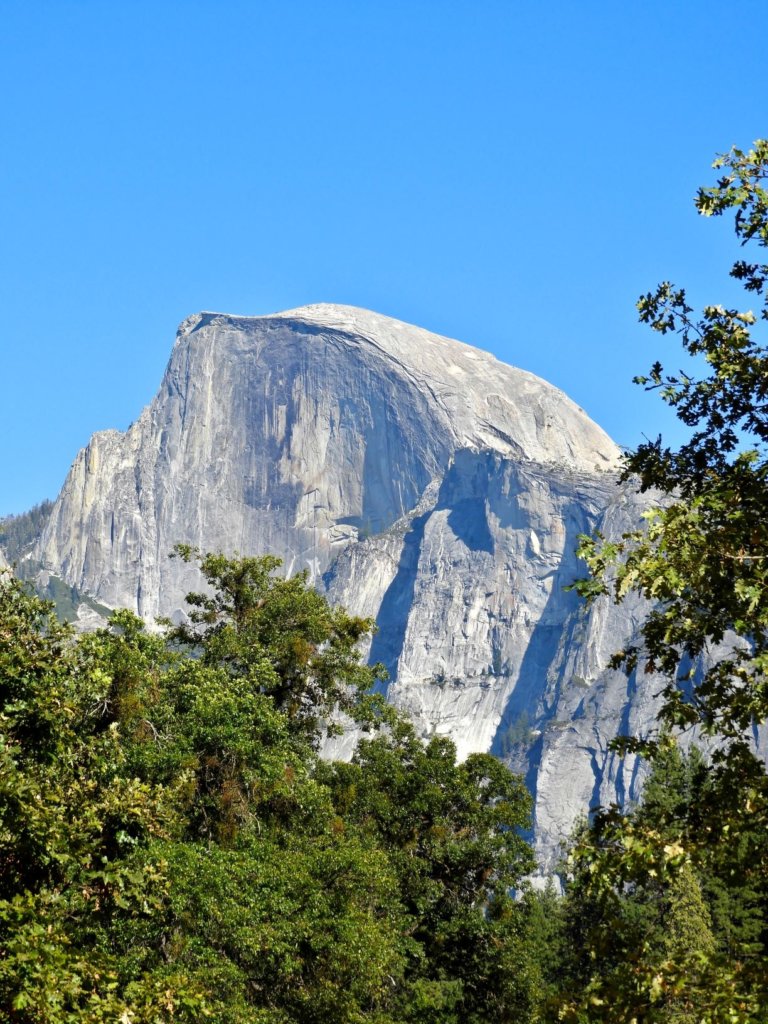
Glacier Point is located 30 miles (a one-hour drive) from Yosemite Valley or Wawona. To get there from either of these places, take the Wawona Road (Highway 41) to Chinquapin, then turn onto Glacier Point Road. At Glacier Point, a short, paved, and wheel-chair accessible trail takes you to an exhilarating view 3,214 feet down to Yosemite Valley below. (Source: Yosemite Guide August 28, 2019-October 1, 2019).
We never found the turn off for that picture-perfect view from outside the Wawona Tunnel on State Hwy 41. You know, the picture you see and go, “That’s Yosemite!”? Maybe we were just dizzy from driving in continuous circles.
El Capitan is a massive granite monolith standing 3,593 feet from base to summit. Climbers from all over the world come to scale the incredible cliffs.

Where Not to Eat
There are places to eat in the park; however, beware of the food quality. We ate at Degnan’s Kitchen—a cafeteria-style eatery with an outdoor patio. The French fries and onion rings were lukewarm. They tasted dry and stale like they had been sitting on a countertop for some time waiting to be devoured by some poor, hungry tourist like us.

A Tale of Two Children
Even though the food was not good, we were entertained with people watching. Whilst enjoying our mediocre dinner, two young boys about the age of 10 were entertaining themselves in the dining area.
“What’s that?” Said curious boy #1, pointing to a small, skittish, furry creature.
“I think it’s a squirrel.” Curious boy #2 exclaiming with glee.
“Holy shit!” Obviously, curious boy #1 has not been in the wild much. The mother of the boys quickly chided them for swearing and the boys went back to munching on their food.
Although we did not see much other wildlife besides children and squirrels, bears and mountain lions reside in Yosemite. Do not let children run ahead and do not keep food in your car. A travel blogger friend told us a story of their visit to Yosemite and having the back end of their car peeled back like a can of sardines from a bear foraging for food in their vehicle.
When is the best time to visit Yosemite National Park?
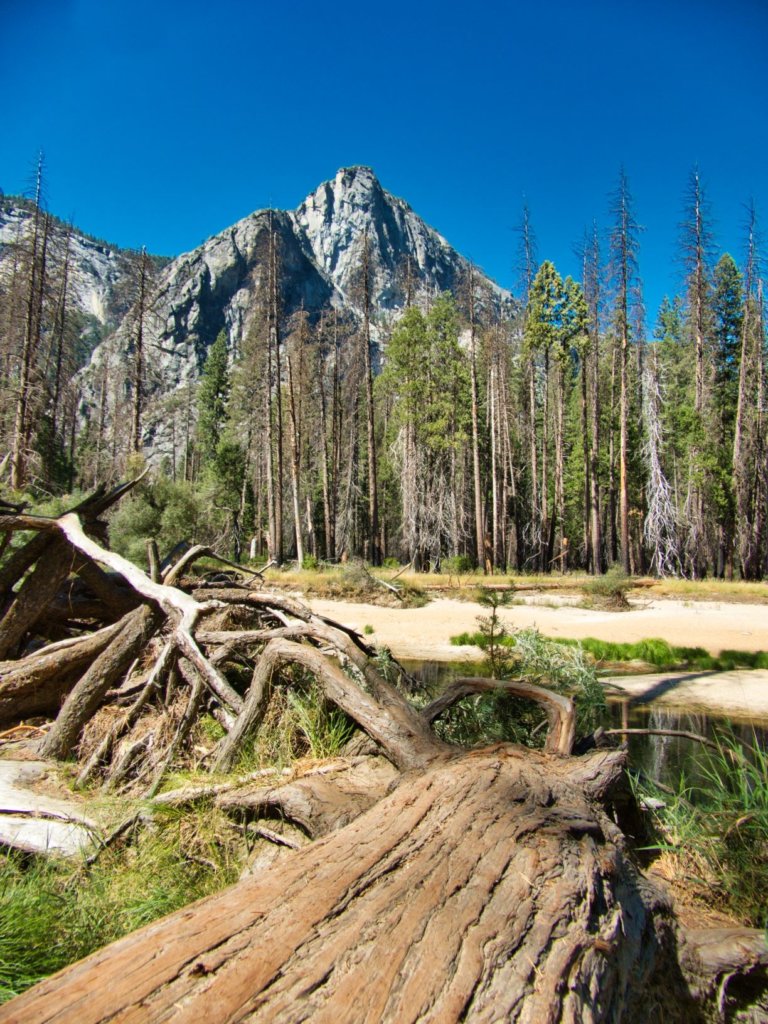
Fall
See more of the park and fewer people in the fall. October to November is the wonderful season of autumn in Yosemite National Park.
All areas of the park usually remain open through October, and sometimes into November; however, short-term closures may occur due to snow. Services are not available along Tioga Road after September. Overnight parking is not permitted after October 14th. Yosemite Valley and Wawona remain accessible by car all year, however tire chains may be required, depending on conditions. Check the National Park Service website for updates.
Weather is quite variable in the fall ranging from hot to cold to dry to rainy or snow. Temperatures in Yosemite Valley & Wawona average 54°F (12°C) / 35°F (2°C).
If you are going to see waterfalls, fall is not the time to visit Yosemite National Park. Water levels are generally low and waterfalls can dry up. Some waterfalls, including Vernal, Nevada, and Bridalveil, run all year; however, their flow slows to a trickle by fall.

Fall colours are also not prominent as most Yosemite trees are evergreen so do not expect dazzling colours that you might see elsewhere.
Winter
December through March is the season of solitude in Yosemite National Park. Many roads close during the winter so it is best to check the park’s website for details.
Do note, the park can be remarkably busy during the winter holidays, especially in late December and early January. Traffic will be congested and parking limited. Imagine that.

Winter in Yosemite is snowy and cold, though sunny days are common. Cold also depends on what part of the planet you live in and the weather you are accustomed to. Yosemite Valley and Wawona averages 53°F (12°C) / 28°F (-2°C)
Water levels still tend to be low in winter but once the snow falls, Yosemite Falls begins to flow again, though not at springtime levels.
Spring
Tis the season of waterfalls. If you are a waterfall hunter, Yosemite National Park in spring is the place for you. Runoff causes peak flows to reach between May and June.
Avoid delays and arrive at Yosemite before mid-morning. Entrance stations and popular areas like Yosemite Valley and Glacier Point fill up quickly.
Weather in spring is highly variable with sunshine and relatively warm days, with chances of an occasional snowstorm.
Temperatures in Yosemite Valley & Wawona average 69°F (21°C) / 39°F (4°C).
While most of Yosemite remains snowy through May and into June, some hikes from Yosemite Valley, Wawona, and Hetch Hetchy are often snow-free by April, and most are usually snow-free by sometime in May. Backpacking options remain limited.
Summer
June through September are where you can expect to see a lot of the park and a lot of people.
Weather is warm to hot with occasional rain. The rain usually falls as afternoon thundershowers in higher elevations. Yosemite Valley & Wawona average 87°F (31°C) / 51°F (10°C).
Rivers and waterfalls slow down in the summer. Some waterfalls, including Yosemite Falls, can reduce to a trickle in the dry season of the summer and can be completely dry by August. Other waterfalls, including Vernal, Nevada, and Bridalveil flow all year; however, flows can be exceptionally low by late summer.
June is the time for wildflowers in Yosemite National Park so if you are looking for a blast of colour, early summer is the time to visit.
Hiking Trails in Yosemite National Park

With over 800 miles (1287 kilometres) of hiking trails to explore all with varying degrees of intensity, there is no better way to enjoy Yosemite than on foot. Speak with a ranger at the visitor centre to help you plan your day as you know your limits and timeframe. A few trails that we either did or saw other people doing while we visited the park are listed below.
What should you do if you have 1-2 hours?
- Godspeed if you only have 1-2 hours in Yosemite.
- Stop at Bridalveil Falls for a photo opportunity. The flow of the water is heavier and lighter depending on the season. From the Bridalveil Fall parking area, there is an easy hiking trail of 0.5-mile (0.8 kilometre) roundtrip, 20 minutes.
- Walk Lower Yosemite Fall trail. The trail is flat and an easy walk with lovely views of the falls. 1.0-mile (1.6 kilometres) roundtrip, 20 minutes. You can access the trail from shuttle stop 6.
- Get the famous picture of El Capitan and Half Dome from Tunnel View. This is the view we never found. Both El Capitan and Half Dome are easily recognizable and visible from the Southside and Northside drive.
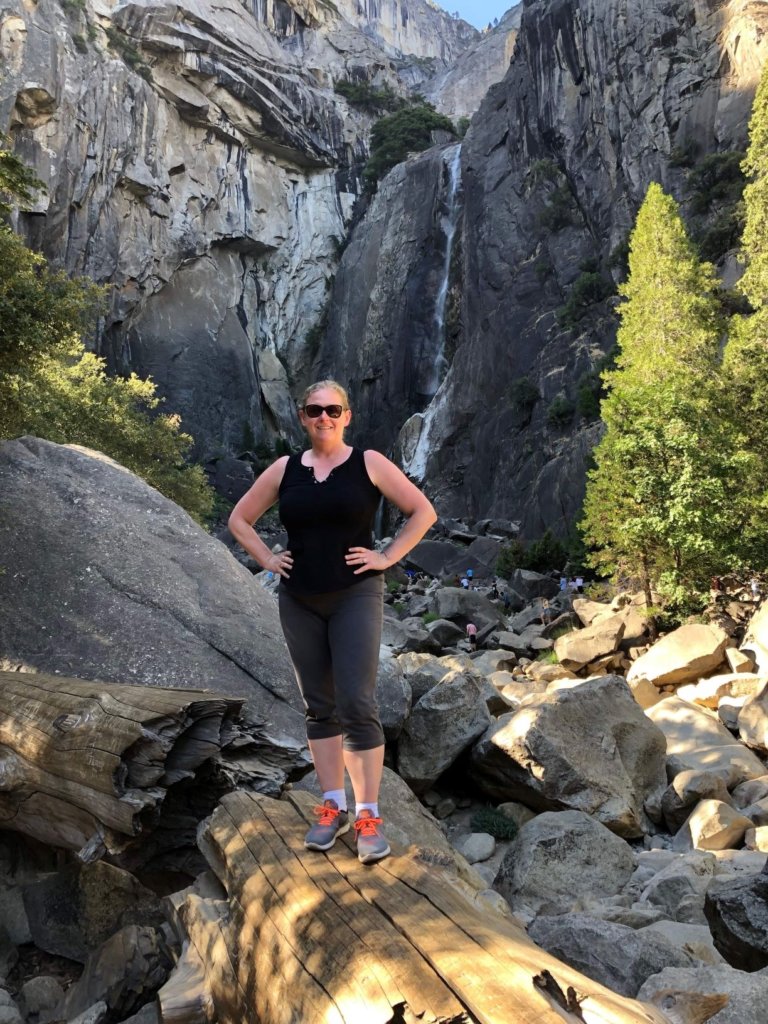
What should you do if you have a half-day?
- Explore Upper Yosemite Fall Trail to Columbia Rock. This is a strenuous, 2-mile (3.2 kilometre) roundtrip hike with a 1,000-foot gain. Access the trail by camp 4 near shuttle stop 7. Expect a time frame of 2-3 hours to complete this hike.
- Mirror Lake Loop hike allows for exhilarating views of Half Dome and Mt. Watkins. Note: swimming is not permitted in the lake. The trail begins at shuttle stop 17. The first mile of the trail is paved and leads directly to Mirror Lake. The trail is 5 miles (8 kilometres) and is a moderate hike. Expect 2-3 hours for this hike. Also, pets are not allowed on this trail. Source: Yosemite Guide August 28, 2019 – October 1, 2019.
What should you do if you have a full day?
- Hike the Valley Floor Loop, a 13-mile (21 kilometres) full loop that will take approximately 5-7 hours to complete. This moderate trail is accessible by lower Yosemite Fall shuttle stop 6. Source: Yosemite Guide August 28, 2019 – October 1, 2019.
Is a Visit to Yosemite National Park Worth It?
Not every visit and experience while travelling is top-notch, nevertheless, with more time and better planning, I’m sure Yosemite is a must-experience National Park. Our lack of foresight for the time it would take to get to Yosemite Valley and to park were keys in our unsatisfying experience. Please, learn from our key takeaways:
- Stay as close to the park as physically possible.
- Arrive at the park as soon as the gates open.
- Don’t drive in the park. Take the shuttle where you need to go.
- Take your time. This is not a National Park to rush into and rush back out again.
- Plan. Know exactly what you want to see and where you want to go so that you don’t miss out.
All pictures in this post are taken by Charlotte, yours truly, as always, unless otherwise stated.
Mission statement: Transform your life with travel—one destination, one adventure, one story at a time.
